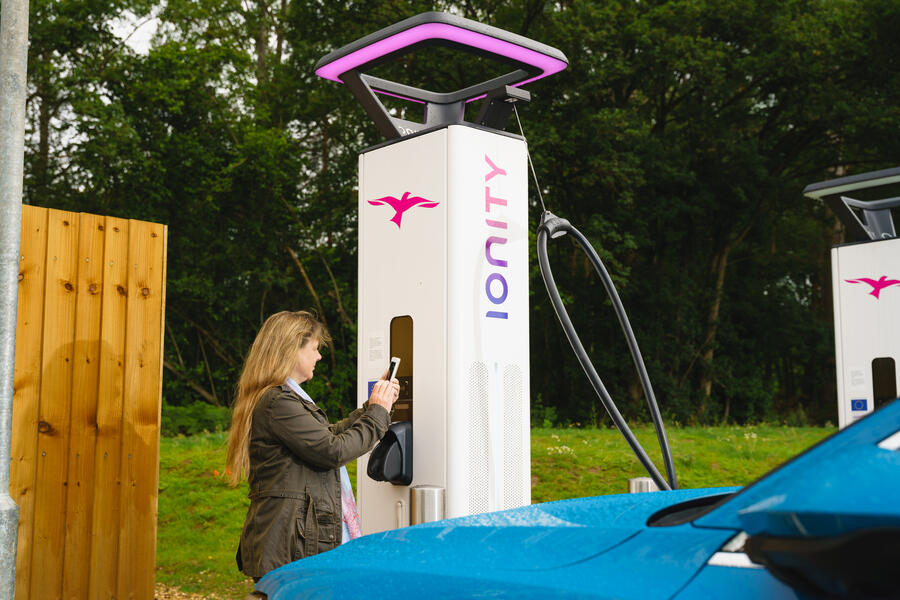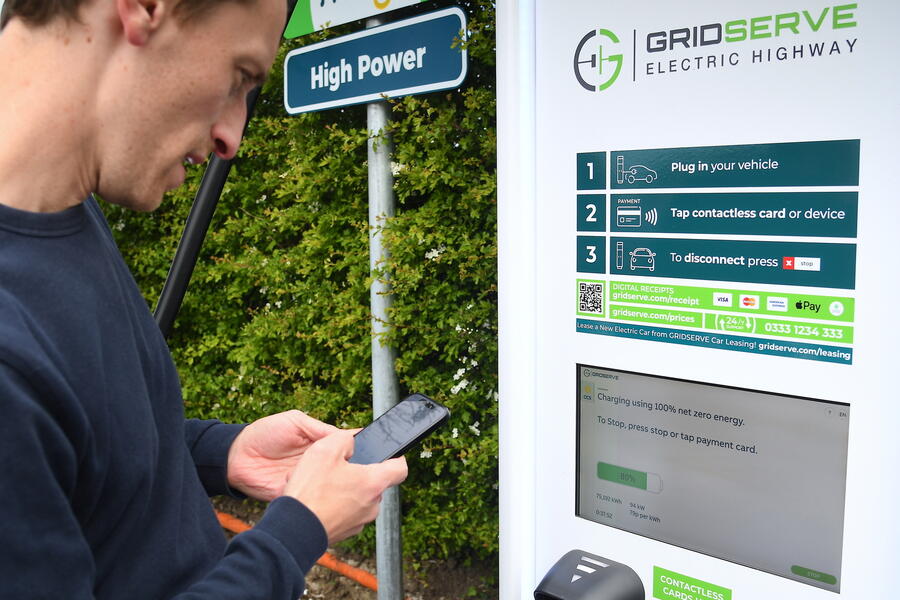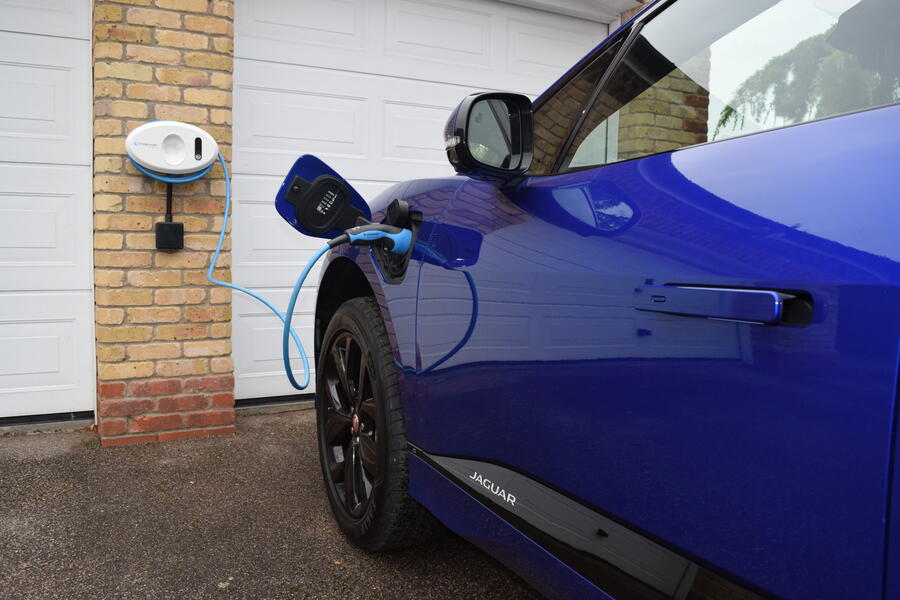When you own an electric car, you need to know where to charge it and, more importantly, how to pay for those juicy electrons.
When electric cars first entered the mainstream, charging was often tedious, with few available chargers and a confusing number of ways to pay for it.
Previously, the most widespread method of paying for your charge was to use an app downloaded to your mobile phone.
Eventually, every charging provider introduced its own app, which made charging a stressful process – even more so for drivers who did not own a smartphone.
And don’t forget: most electric cars now have in-built charger maps, which can advise you on where to charge.
But thanks to new laws and technology, paying to charge your electric car is now easier than ever.
This guide will walk you through all the methods you can use to get your car recharged as quickly and conveniently as possible.
Ways to pay for an electric car charge
Contactless
In 2024, using your contactless credit or debit card is the easiest way to pay for an electric car charge. All you need to do is find a charger, park up, follow the instructions displayed on that specific charger, tap your card and away you go.
Some older units (most likely slower-charging units installed more than 10 years ago) won’t offer contactless.
However, the government’s newly introduced public charge point regulations mean all newly installed public chargers with a charging speed of 8kW or higher, and existing chargers with speeds of 50kW and above, are legally required to have contactless available to all drivers.
As a result, paying for an electric car charge with contactless is becoming more accessible and straightforward, as all of the UK’s biggest charging networks – including BP Pulse, Gridserve, Instavolt, Inity, Pod Point, Shell Recharge and Tesla’s Supercharger network – offer contactless payments.
If you don’t have a contactless card, don’t worry: you can still enter your card and PIN the traditional way with most modern car chargers.
Mobile apps
Many electric car charging companies offer their own apps that you can download for free to your mobile phones.
They can be used to pay for a charge, but they also display a wealth of information you won’t get if you pay with contactless. BP Pulse, Shell Recharge, Instavolt and Ionity have their own apps, as do Tesla, Osprey and Ovo.

Many apps have in-built mapping functions that display all the chargers in the country, their availability, how fast they charge, and even if they’re out of service. Apps are also useful for seeing exactly how much you’ve spent on charging.
Some even offer cheaper rates and discounts if you pay through the app, which can be better value than charging using contactless. Others have reward systems so they can be well worth it over time.
Apple Pay and Google Pay
Paying for your charge using Apple Pay and Google Pay is as easy as using your contactless credit card.
You use it in the same way as contactless. First, set up your card on either Apple or Google Pay. Then hold your phone close enough to the card reader when the machine prompts you. Easy!

Depending on your settings, you can access your card on your phone with the touch of a button, or, if you require a bit more security, you can set it to unlock with a password, or through face recognition, on more modern mobile phones.
RFID card or provider-issued fob
Some charging networks offer a subscription service where you’re able to sign up and receive a unique RFID card or a fob that you can use to pay for your charge.
When you scan this card at a charger, you’ll automatically be sent the bill for any costs you incur - so it’s quick and easy.
Some older chargers are limited to RFID-only, which means you and a few other drivers will have exclusive use of them. There’s a downside, though: RFID cards can be limited to chargers installed by the company that supplied the card.
Paying for an electric car charge abroad
Europe’s charging network is constantly growing, so finding a charger on a continental highway should be a simple task. As in the UK, paying with contactless is widespread but some older chargers will still require an app or, in rarer cases, an RFID card.
Beware, though: some banks restrict the amount you’re able to spend in one transaction when using contactless, or when paying with a mobile phone abroad. Some countries will tax you slightly for using contactless too.
It's also worth noting that in 2023, as part of the alternative fuels infrastructure regulation (AFIR), the EU agreed that there should be a rapid EV charger every 60km (37 miles) along the continent’s main transport corridors.
The cost of charging an electric car
The cost of charging an electric car can vary based on several factors, including where you are in the country, how fast the charger is and which charging provider you've chosen.
Beware: in some cases, chargers can be found in private car parks that can charge you if you stay longer than permitted, and you may have to purchase a parking ticket.
But which providers offer the cheapest rates for charging? Well, Tesla stands out against the crowd - it charges 58p per kWh, and the great news is the supercharger network is now open for all drivers to use.
Other big-name players in the top ten include Podpoint, Ionity and Gridserve, all of which charge less than 80p per kWh with charging speeds of 150kW and above.
The most expensive mainstream public chargers to use are BP Pulse and Shell Recharge, both of which offer some of the highest charging speeds available today.
Rapid charging prices in the UK
| Charging Provider | Price per kWh |
|---|---|
| Tesla | 58p |
| Podpoint | 69p |
| Ionity | 74p |
| Gridserve | 79p |
| MFG | 79p |
| Osprey | 79p |
| BP Pulse | 85p |
| Shell Recharge | 93p |
Some chargers are free to use, but these are becoming increasingly rare. Sainsbury's, Aldi and Lidl are all supermarkets which have offered free charging, while Tesco, Waitrose, Morrisons and Asda all require a fee. Head to your local supermarket website to find out what charging facilities they provide.
Paying to charge your car at home
Charging your car at home can be considerably cheaper than using a public charger. Charging at home is great for saving money but home chargers usually offer much lower charging speeds.
The slowest method of charging your car from home is by using a standard three-pin socket, but some drivers opt for a slightly quicker 3.6kW charger. Most home chargers charge at speeds of up to 7kW - enough to fully charge most EVs overnight - and we'd suggest this is the one to go for.
The fastest home charger money can buy today can charge at speeds of up to 22kW, which is as fast as some older public chargers.

To make the most of your home charger, it's best to charge your car overnight. This is because some energy providers offer reduced tariffs during the early hours of the morning, which could significantly cut down on your charging costs.
Make sure you read up on home charger grants, too. The government could give you some significant money towards installing one - as much as £350 in some cases.
Of course, not everybody has the facilities or the means to install a home charger, and this remains one of the major barriers for many in terms of making the switch to electric cars.






Join the debate
Add your comment
There's no mention of charging costs here. Personally I wouldn't want to be paying too much over the odds for energy when home charging is extremely cheap. I assume that all those convenient motorway service fast charge facilities come at a premium. For me the one big attraction of an EV is the potential very low energy cost.
They're difficult to get to you know, these motorway service stations.
Good to see that typical charging costs have no been added. But for comparison, it's interesting to consider that petrol still costs around 15p per kWh, even with a very high rate of tax. It's just too bad that a typical petrol engine can only convert around a quarter of this energy into useful work (though it's a pretty good heat generator!). For me though an EV is really only viable if most of your charging can be done at home.